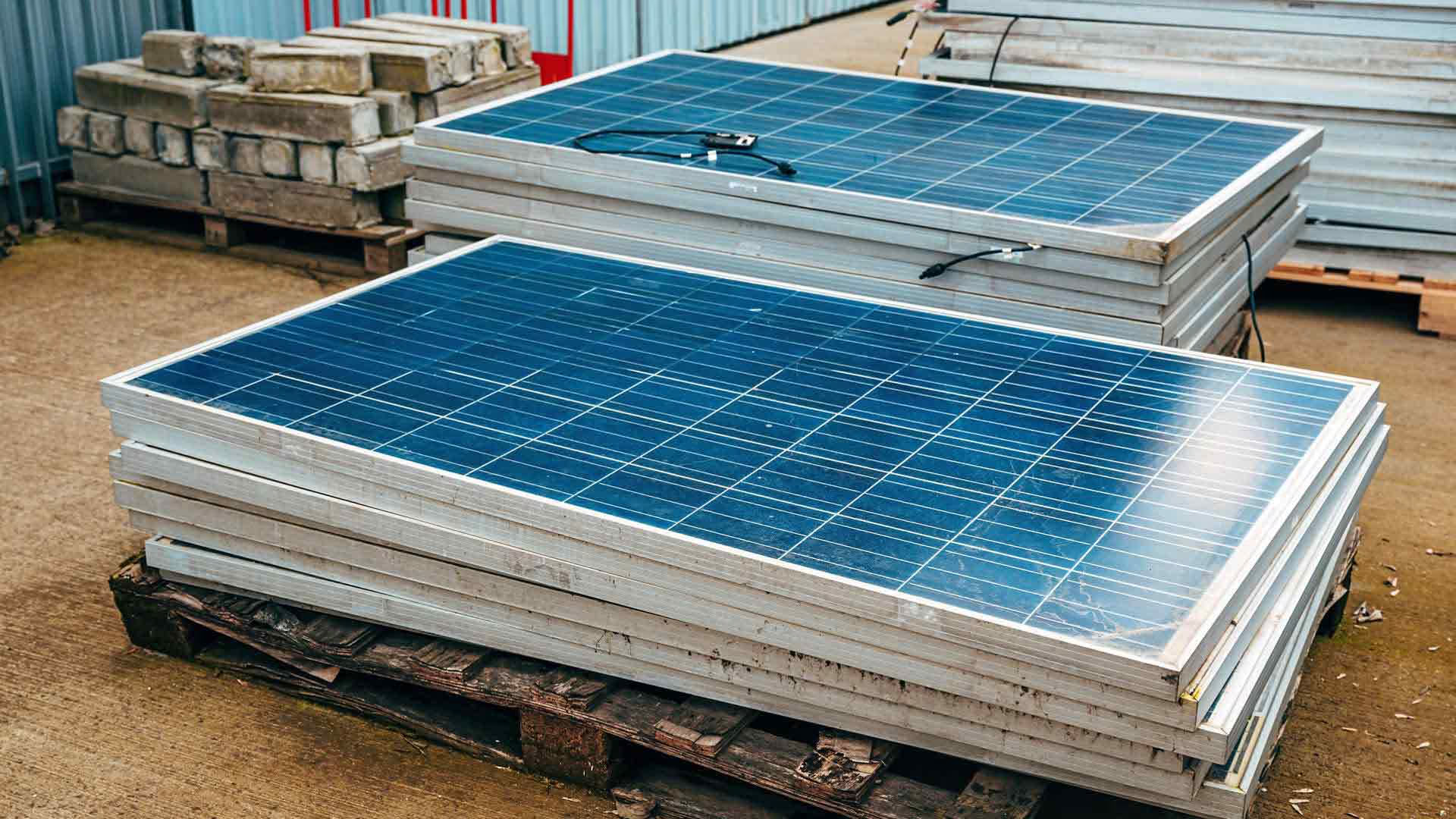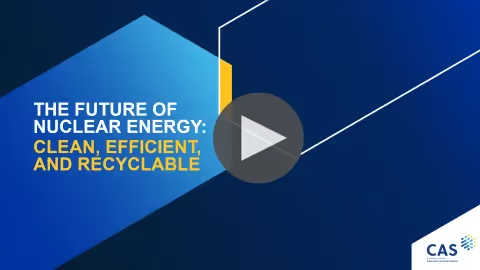CAS Insights
持続可能性
Filters

How to improve solar panel recycling
As solar panel usage increases, researchers are looking for new methods to tackle PV waste.

Innovating the chemical recycling of plastics
Recycling plastics can be challenging with traditional methods, leading to developments in chemical plastic recycling technology.
.avif)
Nuclear power in your pocket? 50-year battery innovation
Pocket-sized nuclear batteries are here. Discover their potential and limitations, from powering wearables to tackling radioactive waste.

Science fact vs. fiction: Can we recycle semiconductors?
Recycling semiconductors was once a far-off dream. However, new research and technology shows that this could become reality.

Four uses for renewable feedstock in sustainable coatings
With the push towards increased sustainability, here are four ways coatings manufacturers are making use of renewable feedstock for their own products.

Hydrogen needs cleaner production: Photocatalysis is the answer
Learn how photocatalysis can produce clean hydrogen from water and solar energy and why it is crucial for decarbonization.

Understanding the power of catalysis
Catalysts and catalysis have transformed our world, from ancient times to modern sustainability. Learn about the latest research trends and innovations.

Going green with plant-based meat sustainability
With consumers changing their diets for personal and health reasons, innovation to increase quality and variety creates a diverse and competitive market.

R&D insights: Sustainable catalysts for the future
Catalysts have been enabling green chemistry with applications in many industries.

Infographic: What can be done about microplastics?
Microplastics have infiltrated our entire world, even down to the water we drink and food we eat. Researchers are looking at new ways to address them.

スーパーキャパシタ技術 : グラフェンは遂にその潜在能力を発揮するのでしょうか
新しいスーパーキャパシタ技術は、電池の安全性の向上、充電時間の短縮、長寿命化につながる可能性がある。

Five ways to achieve sustainable medical packaging
Learn five ways to reduce waste and use biodegradable materials to develop sustainable sterile packaging options for medical devices.

R&D Insights: Tiny microplastics with massive implications
Microplastic pollution is a global problem due to their disruption of ecosystems and their ingestion by humans and animals.

R&D Insights: Sustainable agriculture and fertilizer production
Agriculture and fertilizers have a sustainability problem. Understand emerging trends around reducing this industry's carbon emissions.
.avif)
リチウムイオン電池リサイクルにおける新たな進展
劣化した電池を低コストで修復・再利用することが可能になるかもしれない、ダイレクトリサイクルの新しいアプローチを解説します。

Is nuclear energy critical in solving climate change?
Nuclear energy could play a part in solving climate change, but there are still hurdles and challenges that must be overcome.

Reduce, reuse, recycle: the path to sustainable agriculture
educing, reusing, and recycling can improve fertilizer access, minimize environmental impact and dependence on finite resources, and lead to a circular bioeconomy.

Hydrogen fuel-Insights into a growing market
Hydrogen fuel technology is being examined for powering electricity, heating, and transportation.

Scientific review on sustainable fertilizers
We analyze the scientific and patent trends on sustainable fertilizers in the CAS Content Collection to help scientists use new, more environmentally friendly sources.

Innovation in sustainable fertilizer production
Synthetic fertilizers ae valuable but leave a large carbon footprint. Sustainable fertilizers are an environmentally friendly alternative that is growing in interest.

Are we doing enough to solve the major issue of microplastics?
The WHO uncovered the scope of the microplastics problem. What can we do to correct this for future generations?

Scientific review on microplastics pollution
Methods to push back against the wave of microplastics that are poisoning the environment are in full swing.

Microplastics: Tackling the invisible enemy
Microplastics come from countless sources and have a large impact on the environment. Scientists are working hard to combat this growing problem.

Hidden greenhouse gas emissions in plant growth
Learn more about the hidden greenhouse gas emissions of plants, a more sustainable approach to fertilizer production, and new approaches to make phosphorus more recyclable.

Nuclear energy could be the key to cutting global emissions
Visual infographic of nuclear energy’s key benefits of an efficient fuel source, a low emissions option (compared to coal and natural gas) and new recycling efforts that minimize nuclear waste.

Green chemistry in the pharma industry: Sustainable pastures for those who innovate
One approach that has gained momentum since the 1990s is green chemistry, a scientific field focused on "the invention, design, and application of chemical products and processes to reduce or eliminate the use and generation of hazardous substances.

よりグリーンなプラスチック代替品、バイオベースポリマー
With over 90% of the world’s plastics production requiring fossil fuels, bio-based polymers generated from renewable sources have substantial benefits over traditional plastics – from reducing CO2 emissions, increased biodegradability, and less dependence on fossil fuels. Learn more in our landscape

Lithium ion battery recycling
Learn more about the scientific challenges, emerging technologies, and the financial and environmental implications for recycling lithium ion batteries.

Combatting carbon emissions: Is carbon capture the answer?
This article summarizes the results of an extensive recent analysis of carbon dioxide capture, including research trends, methods employed, and storage.

グリーン水素経済 - 世界のエネルギー供給を一新させる革新的テクノロジー
A literature search in the CAS Content Collection provides useful insights into recent and ongoing intensive research and development into green hydrogen.

A review of materials research for a green hydrogen economy
Many technologies have been researched with an eye toward enabling a hydrogen economy.

Bio-based polymers as an alternative to fossil fuel plastics
Most synthetic polymers are derived from fossil fuel resources, whose scarcity and imbalanced global distribution can affect plastics producers. Bio-based polymers, obtained from renewable biomass resources, have received wide attention in the past two decades.

How scientists are restoring carbon balance in the environment
While human capabilities have only increased due to recent technological and medical advances, they have significantly contributed to the release of around 830 gigatons of CO2 into the atmosphere in just the last 30 years alone.

より環境に優しい未来:リチウムイオン電池と水素燃料電池
より環境に優しいエネルギー源を求める継続的な取り組みにおいて、リチウムイオン電池と水素燃料電池は、研究から多大な恩恵が得られ、公共の関心が非常に高まっている2つの技術です。この2つの技術の有望性と課題について詳しく知るには、このブログ記事をお読みください。

Readdressing the balance: Exploring research trends in carbon dioxide sequestration
Learn more about carbon capture, storage, and reduction in our landscape view of this emerging research with unique insights.

The regulatory environment for lithium-ion battery recycling
Lithium-ion batteries (LIBs) are commonly used in a variety of consumer products, including cellular phones, laptop computers, and more recently, electric and hybrid vehicles.

Lithium-ion battery recycling: Overview of techniques and trends
As the production and usage of lithium-ion batteries (LIBs) has increased exponentially, their manufacturing and disposal have become subjects of political and environmental concerns.

プラスチックを「食べる」スーパー酵素はプラスチック問題を解決できるか
通常なら数百年かかるところを、微生物の酵素がいかにプラスチックを分解するかに関する研究の概要です。

Organizing vital data to unlock innovation from Brazil’s biodiversity
Brazil hosts 15-20% of Earth's biodiversity, yet much remains unexplored. Researchers struggle to search, screen, and compare chemical substances due to disorganized information.
No results found.
There are no results with this criteria. Try changing your search.
